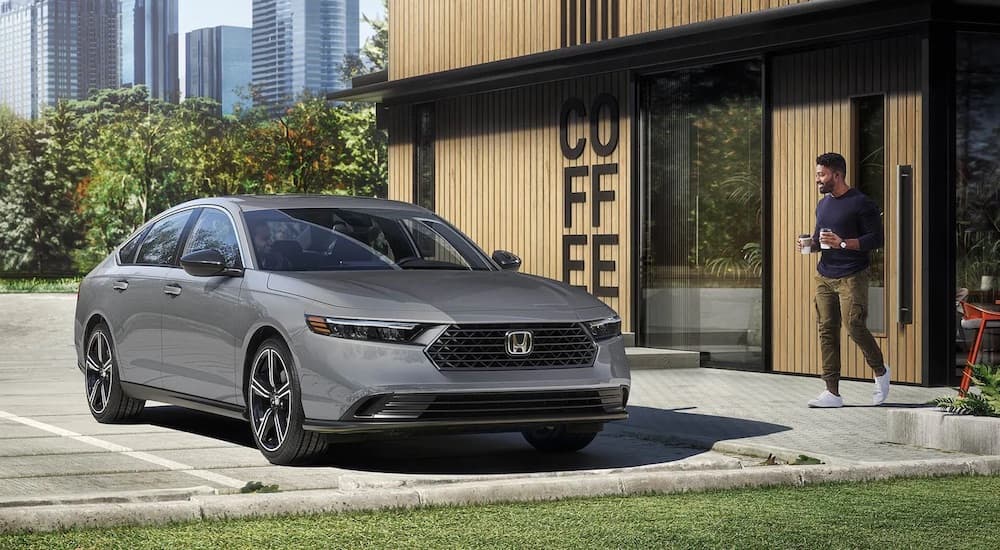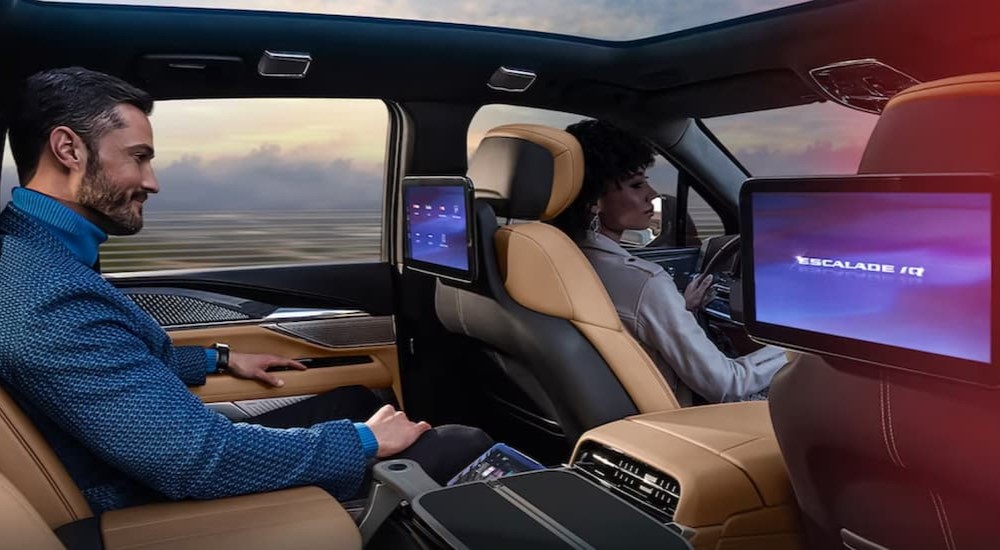The sharing economy has revolutionized everything from food delivery and personal transportation to vacation rentals, camping, and retail. Simply download an app to your smartphone and you could start picking up a little extra work on the weekends or even launch an entirely new career. Rideshare services like Uber and Lyft allow drivers to turn their everyday vehicle into a lucrative source of income by ferrying travelers to the airport, providing rides around town, or shepherding the bar crowd home after last call.
According to Indeed.com, Uber and Lyft drivers can make up to $60,000 or $70,000 per year when working full-time, but it all depends on how seriously you approach the job. Picking the right time, day, and area can mean the difference between a banner week and a dip in the red, but choosing the right vehicle is often just as important. A good car, truck, or SUV can help you rake in the dough, while the wrong option can leave you facing gas and repair bills that could quickly eat into your profits.
In order to help set you on the path to rideshare success, I’ve compiled a list of the five best vehicles for rideshare drivers. From reliable midsize sedans and thrifty hybrids to luxurious SUVs and even a minivan, you might be surprised to learn which models make the cut.
Best Midsize Sedan: Honda Accord
The Honda Accord might not be the most exciting vehicle on the road, but few are quite as well suited to rideshare duty. Available in both gas and hybrid formats, the midsize sedan offers anywhere between 29 to 51 MPG. The Accord is a bargain without ever feeling like one, which can’t be said for some of its competitors in the midsize category. The sedan isn’t packed with premium materials, but the build quality is there, and nothing feels cheap about the interior.
Thanks to 103 cu.ft. of passenger space, five adults can comfortably fit within the cabin, and the trunk is large enough to stow a full complement of suitcases without having to play “luggage Tetris.” Ultimately, the sedan offers the ideal fusion of affordability, reliability, and efficiency—three attributes that can pay dividends when your vehicle doubles as a source of income.
The entry-level LX trim starts at just $27,895, while the EX-L Hybrid rings in at $33,840. Upgrading to the range-topping Touring Hybrid will only set you back $38,190 and adds some lavish touches like a head-up display and a 12-speaker Bose stereo system into the mix. Throw in the fact that Honda produces some of the most reliable vehicles on the road, with a 70/100 rating from Consumer Reports, and it’s hard to make a case against the popular midsize model.
Best Hybrid Model: Toyota Prius
We shouldn’t have to spend much time making the case for America’s best-selling hybrid vehicle. Since bursting onto the scene at the turn of the millennium, the Prius has single-handedly made “hybrid” a household word. The Prius is primed for rideshare success right out of the gate, offering unparalleled efficiency, a surprisingly roomy interior, and extremely low operating and repair costs. The Prius has never been a style icon, but a 2023 redesign has helped to modernize the stolid sedan and give it a little more curb appeal.
We won’t waste time getting into the Prius’s horsepower, torque, or cargo capacity, which, while impressive, are largely outshined by one figure in particular: 57—as in, 57 MPG. With that sort of fuel economy on your side, you can easily hop between different nightlife hotspots without having to worry about cutting into your earnings. While the Prius is one of the best hybrid models for rideshare driving, you might have noticed that I’ve left a true all-electric vehicle off the list.
This isn’t an oversight but, rather, a matter of practicality. While EVs are getting better, cheaper, and delivering longer ranges than ever before, they’re still plagued by the charging blues. Drivers might be able to work around an EV’s charging schedule when going about their daily routine, but when you’re on the clock, you can’t afford to be taking hour-long breaks to top off the battery. The flexibility of a hybrid makes them a superior option in terms of rideshare driving, though I look forward to the day when EVs are just as convenient.
Best High-Capacity Provider: Toyota Sienna
Uber and Lyft both encourage rides aimed at larger parties as part of their XL services. These XL services differ slightly between brands (Uber XL accommodates up to six passengers while Lyft XL only promises seating for five), but no matter which company you drive for, you’ll need to find a spacious vehicle that can tote up to a half-dozen. There are plenty of full-size crossovers and traditional SUVs that fit the bill, but I’m going to go with a slightly more unorthodox choice—the Toyota Sienna.
One of the last minivans on the market today, the Toyota Sienna is a great option for drivers seeking a roomy and efficient alternative. The minivan offers 33.5 cu.ft. of cargo space with all seven seats occupied, and its lower ride will make entry and egress a breeze, which can be an important factor to consider when dealing with older, disabled, or inebriated passengers. That said, the Sienna’s most compelling feature has to be its ultra-efficient hybrid powertrain.
The minivan’s 2.5-liter four-cylinder engine and two electric motors give it 36 MPG both in the city and on the highway, and adding AWD only dings your fuel economy by a single digit while improving the Sienna’s performance in tough weather conditions. With a generous bundle of safety features like ten airbags, blind-spot monitoring, and Toyota’s Safety Sense 2.0 suite of driver assistance features, it’s no wonder the Sienna is such a popular choice among rideshare drivers.
Best for Premium Services: BMW 8 Series Gran Coupe
Why would a rideshare driver want to invest in a luxury model? It might not seem like an $80k-plus vehicle is a good choice from a business perspective, but it all comes down to landing big-ticket rides. Both Uber and Lyft offer higher-end services branded as Uber Black and Lyft Black. Riders pay a premium for a luxurious, late-model ride, but in order to qualify for either service, both the driver and vehicle must meet a long list of requirements. To qualify for Uber Black or Lyft Black, vehicles must have been produced within the last six years and boast a black exterior and black leather or synthetic leather seats.
If you’re trying to impart an immediate sense of luxury, riding up in a BMW is a great start. The vaunted German luxury brand is known for crafting some of the finest automotive machines in the industry, and the 8 Series Gran Coupe is sure to make every rider feel like they have their own chauffeur. It’s not the roomiest model on the market, but it more than makes up for it with its well-appointed interior and peppy performance.
The 8 Series’ 3.0-liter turbocharged inline-six-cylinder delivers 335 hp, but those looking to give their passengers a real thrill can also upgrade to the 4.4-liter twin-turbocharged V8 that puts out 523 hp. The most obvious drawback of the 8 Series Gran Coupe is its cost (as it starts at $89,400), but drivers can also try to save a little money by shopping for a slightly older version that’s priced somewhere in the $50k range. Just remember to pick a model that’s been produced in the last six years if you want to qualify for Uber and Lyft’s Black services.
Best for Premium SUV Services: Cadillac Escalade
If you’re looking to land some of the best clientele the rideshare industry can offer, it’s time to splurge on a premium SUV. As we discussed above, services like Uber Black and Lyft Black both call for vehicles that meet the highest standards in terms of luxury, capacity, and style. In the case of Uber Black SUV and Lyft Black SUV, the vehicles must also belong to the SUV segment and have the ability to seat at least six passengers. Few vehicles pull off that combination quite as well as the Cadillac Escalade.
As the flagship model of America’s homegrown luxury brand, the Escalade is hard to beat when it comes to pure size and luxury. With seating for seven passengers, 25.5 cu.ft. of cargo volume, and a massive 177 cu.ft. of passenger volume, the Escalade can accommodate even the biggest party—and all of their luggage—with ease. Premium touches like semi-aniline hides leather upholstery, a Wi-Fi hotspot, and an AKG Studio Reference stereo system with up to 40 speakers are sure to garner favor with the Uber/Lyft Black crowd, while the adjustable interior ambient lighting and available rear-seat entertainment package with two streaming-capable 12.6-inch displays round out the interior.
The Escalade’s only drawback is its $81,895 starting price and the fact that its standard 6.2-liter V8 is a bit thirsty at 16 MPG combined. We’d recommend opting for the optional turbo-diesel inline-six, which posts a more respectable 23 MPG while producing less noise.
Start Ridesharing With the Right Ride
Choosing the right make and model isn’t the only consideration to keep in mind when shopping for a rideshare-worthy vehicle. Drivers should also consider a vehicle’s fuel economy, passenger and cargo space, reliability, safety technology, and how much it might cost to insure. It’s always going to be cheaper to find good insurance coverage for a less expensive vehicle or one with an impressive safety record, so don’t get distracted by creature features and styling flourishes when picking your rideshare companion.
There’s also no underestimating the importance of comfort and convenience features like separate climate controls for the second row, wireless charging pads, built-in Wi-Fi, and more. Even if your particular vehicle doesn’t come with these features, enterprising drivers can provide their own amenities to guarantee a positive rider experience, from mints and gum to personal grooming products, charging cords, snacks, and water. When you do a little research and set yourself up for success, a rideshare job can turn your time behind the wheel into a fruitful endeavor.






